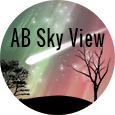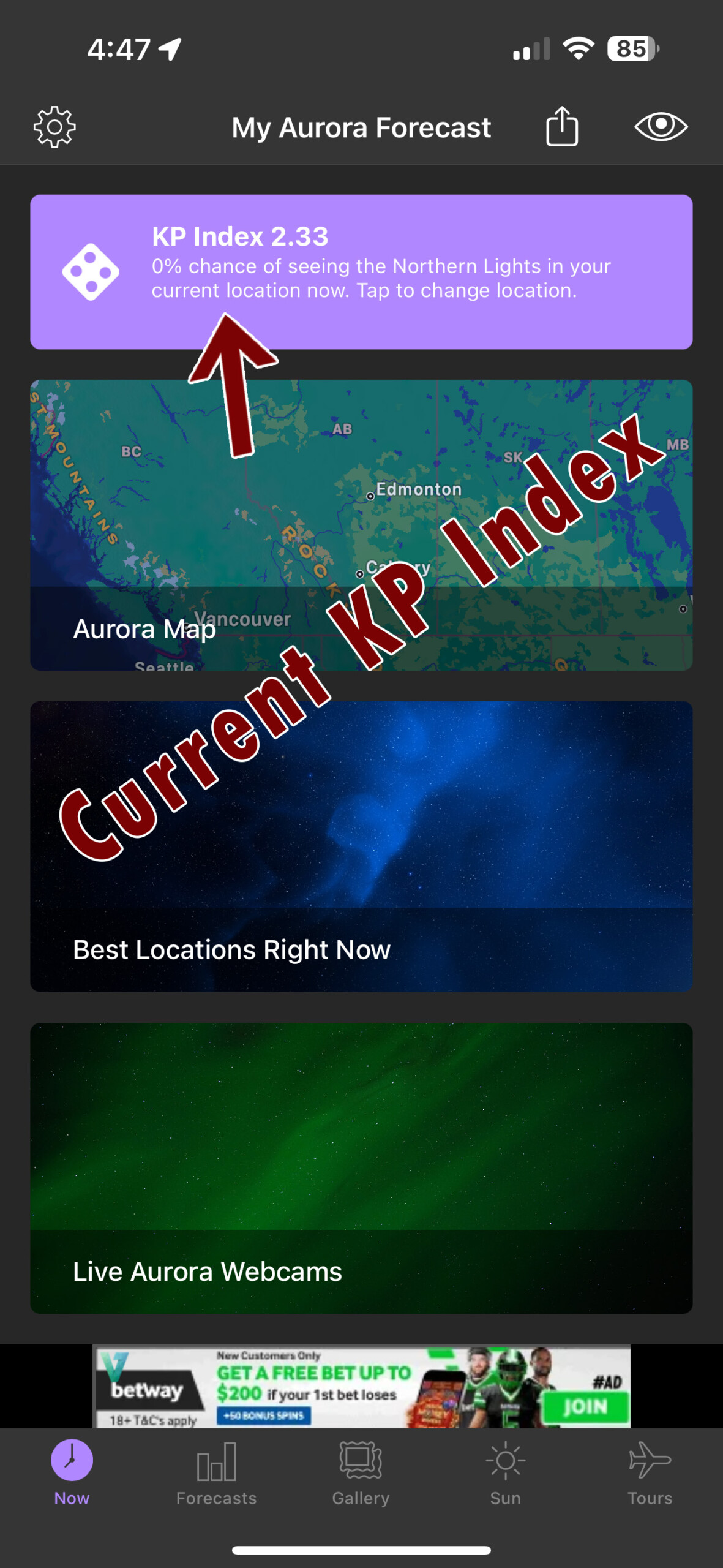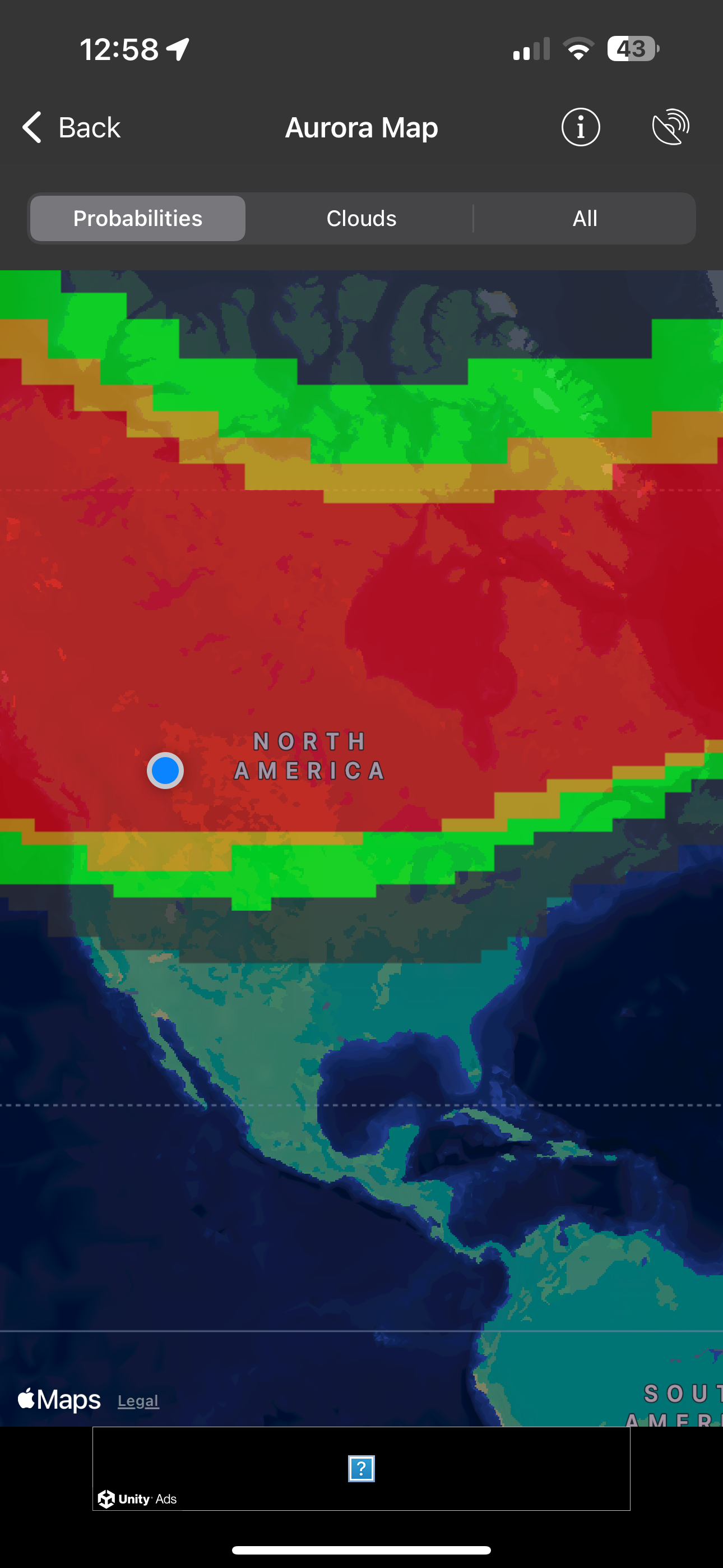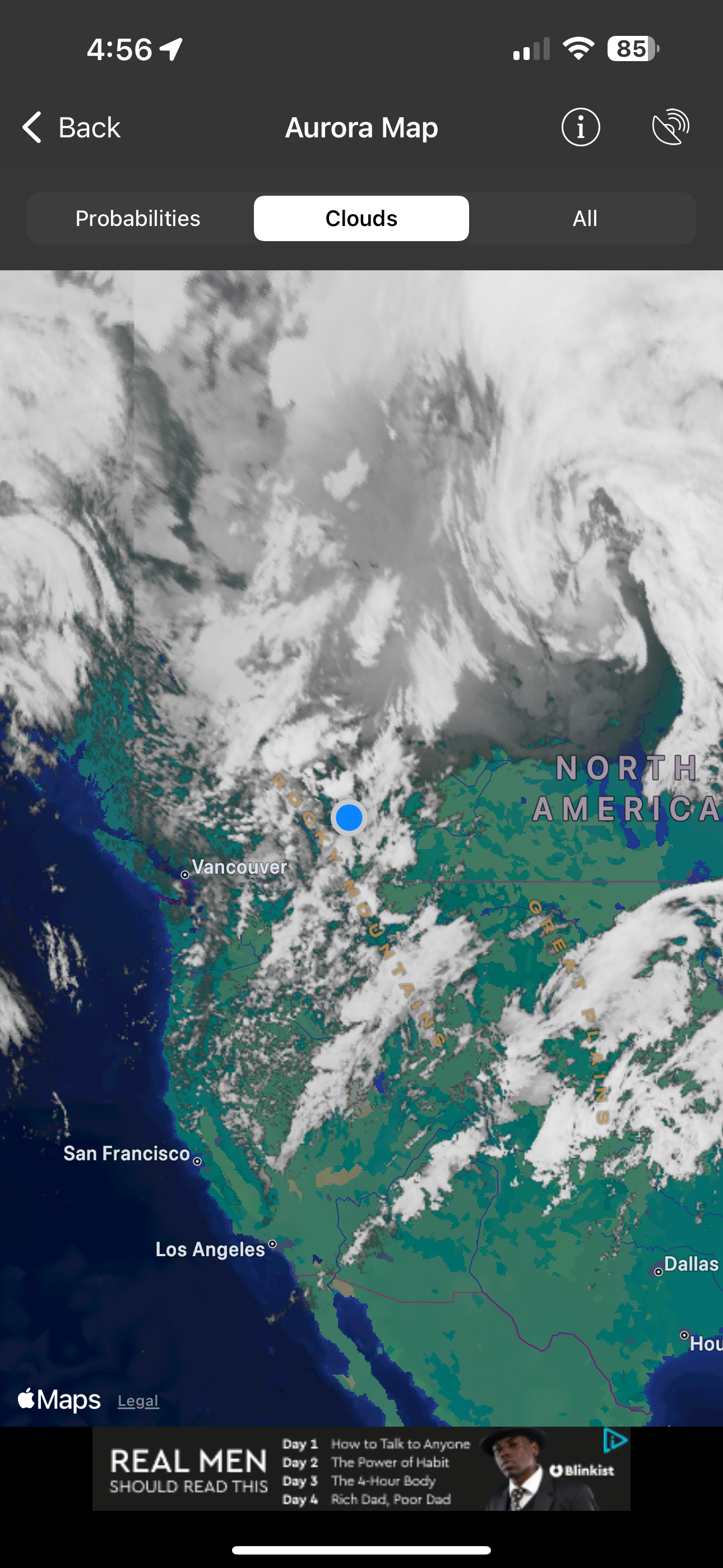Catching a glimpse of the Aurora Borealis might seem like a one in a lifetime experience, but thanks to a multitude of applications and monitoring systems, we have many opportunities to see these magnificent wonders. Thankfully, scientist combined their data with today’s online technology to give us aurora forecasts and notifications. Let’s review the different types of alerts we can receive on our mobile devices and their accuracy and reliability.
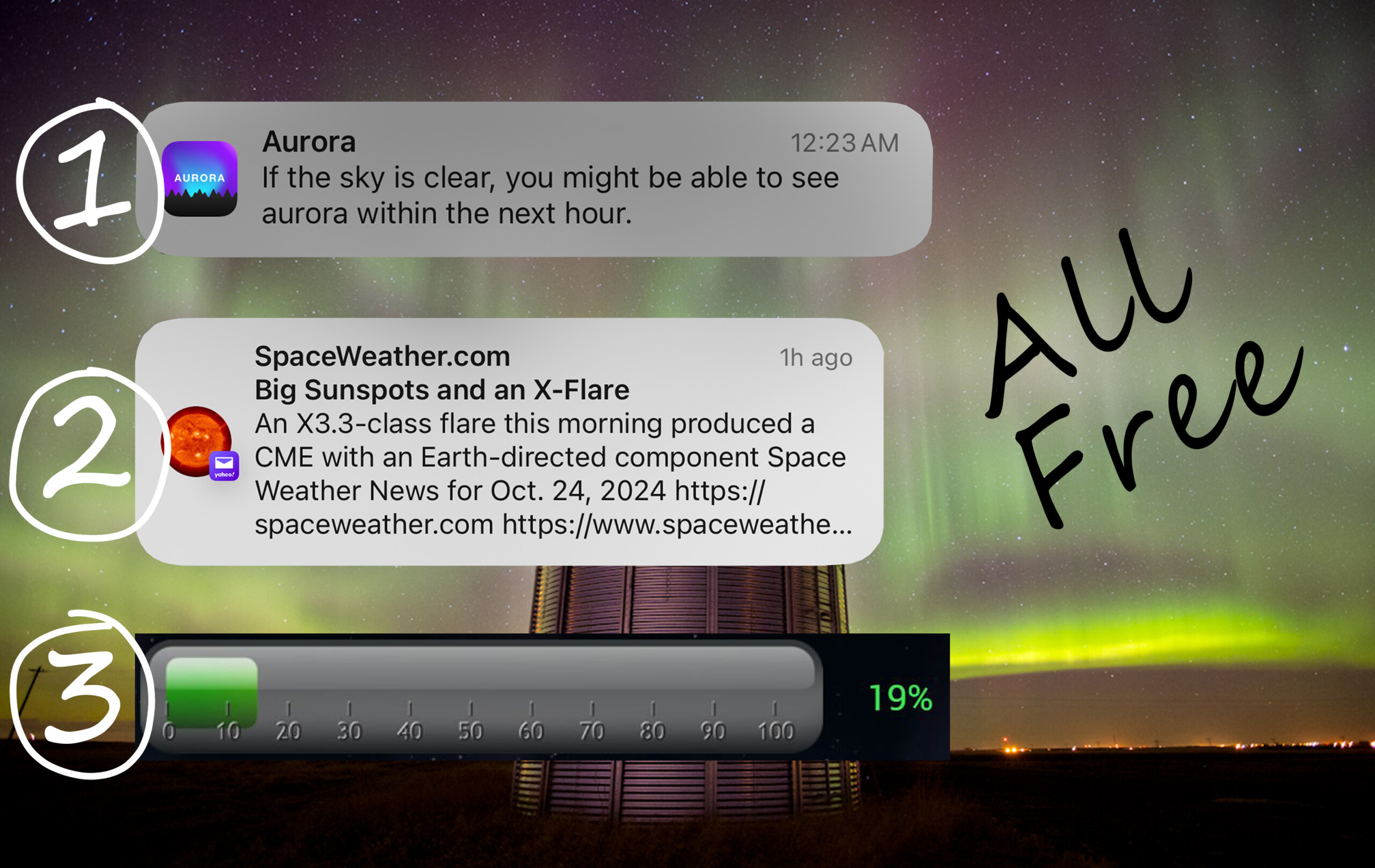
 #1
#1
![]() The free Aurora app is available for android and iPhone users. It’s now a popular tool for tracking and predicting aurora borealis visibility within the user’s location and perfect for short-term notices (aurora activity within an hour of an alert). It’s designed for both enthusiasts and photographers who want accurate forecasts for when the aurora might be visible in their area within a short timeframe. Here are some key features, which we take advantage of:
The free Aurora app is available for android and iPhone users. It’s now a popular tool for tracking and predicting aurora borealis visibility within the user’s location and perfect for short-term notices (aurora activity within an hour of an alert). It’s designed for both enthusiasts and photographers who want accurate forecasts for when the aurora might be visible in their area within a short timeframe. Here are some key features, which we take advantage of:
- Aurora Forecasting: The app uses space weather data to provide real-time aurora forecasts, indicating the likelihood of visibility in a specific location. This includes KP index (an indicator of geomagnetic activity), solar wind conditions, and IMF (interplanetary magnetic field) metrics, which all play a role in aurora predictions. The KP index is a scale that measures geomagnetic activity, particularly in relation to solar wind disturbances impacting Earth’s magnetic field. It’s a key metric for predicting aurora activity and ranges from 0 to 9, with higher values indicating stronger geomagnetic storms and a greater likelihood of seeing the aurora. When opening the app, the main page presents the current KP value for your area. The Aurora app will send notifications as the values reach Higher KP values, letting you know when the auroras are possibly visible in your area.
- Maps and Visibility Probability: The app includes a visibility map showing where the aurora might be visible, color-coded by intensity. It shows your location and any auroras active world-wide. Remember, any active events towards the east, will make their way towards you at a similar longitude. The app also shows probability percentages for various locations, helping users plan for the best viewing spots.
- Cloud Coverage and Weather Conditions: Since weather plays a huge role in aurora visibility, the app integrates weather forecasts, including cloud cover information, to help users find clear skies.
This app is critical for on-the-spot alerts, so if you are serious about chasing the northern lights, this one is critical. The app will send an alert when KP index values are rising. The alerts will range from 0-3 hours in advance of a viewing opportunity. But don’t wait for the last minute to download the app. Do it now and figure out everything it has to offer before you get caught up in the excitement of the event and possibility miss out on the best part of the show.
 #2
#2

SpaceWeather.com is a primary resource for longer term planning of catching geomagnetic events. Not only is it a great source of detailed and scientific information, they provide FREE email alerts of all space activity. For example, as soon as a CME is detected, an notification is sent to all subscribers of the data and it’s probability of its impact on earth. These alerts provide a 2-4 day notice, allowing you to verify weather forecasts and plan your viewing. Not only does SpaceWeather end northern lights notices, they also cover comets, eclipse, noctilucent clouds and anything of interest space.
Sign up for their FREE email notification!
SpaceWeather also offers a PAID service to send SMS text messages. This is a paid service. We are not subscribe but it’s worth calling out they offer both a FREE and paid option.
Sample of the free email notifications 3-4 days in advance of an aurora event
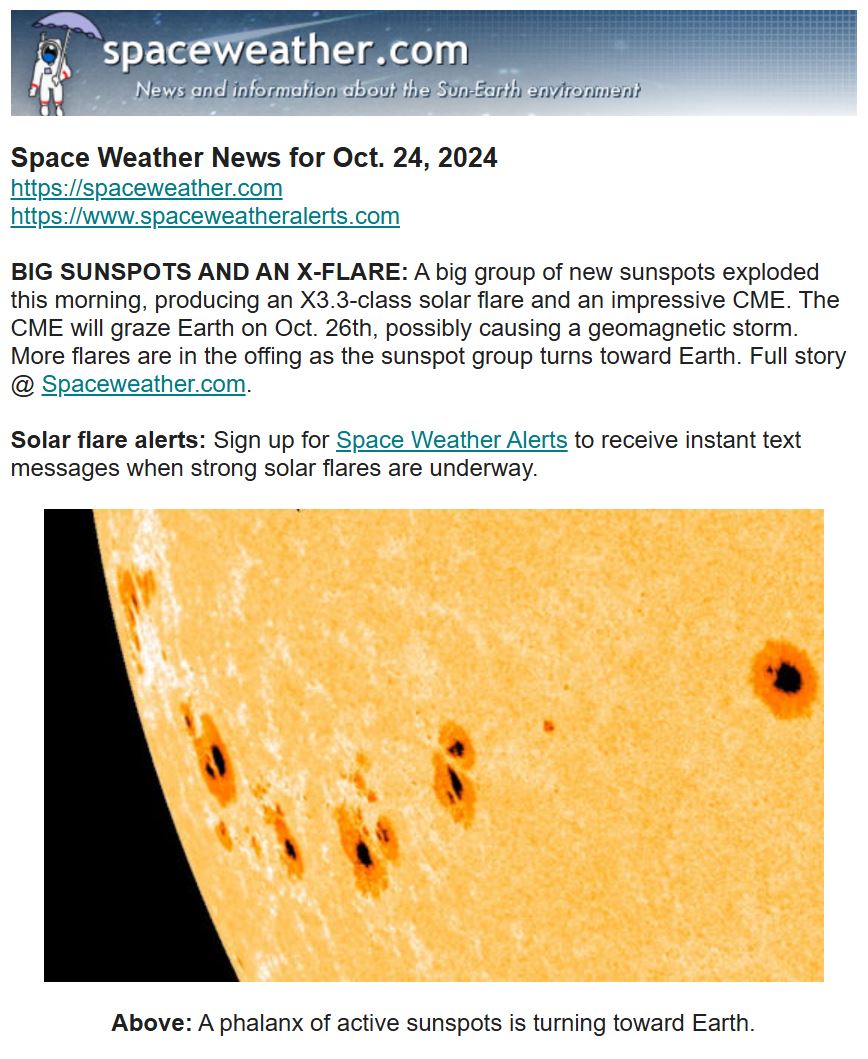
 #3
#3
 Our final notification service is https://www.aurorawatch.ca/. This service has been around for many years and one of the originals. Their website offers hourly reading of North magnetic Field and, and more importantly, the probability of seeing the northern lights at that hourly reading if it were dark outside. The website provides a current probability meter with a percentage, followed by 2 days worth of data. The readings are taken from northern Alberta, Canada (Around Edmonton it seems).
Our final notification service is https://www.aurorawatch.ca/. This service has been around for many years and one of the originals. Their website offers hourly reading of North magnetic Field and, and more importantly, the probability of seeing the northern lights at that hourly reading if it were dark outside. The website provides a current probability meter with a percentage, followed by 2 days worth of data. The readings are taken from northern Alberta, Canada (Around Edmonton it seems).
They offer a FREE email alert service, which use to be our source for notifications. The Aurora app, now provides this service and more, leaving AuroraWatch as a backup alert service. There are a few items of note with this service.
- The alerts are specific to Alberta, Canada.
- It seems email alerts are sent based on hourly readings. If there is a spike between the reading, an alert may not be sent.
- The email signup process is on a unsecured server, but we haven’t had any issues after submitting our email address.
- Their email sign-up page is overcomplex, which is surprising since their website well designed.
Sign up for their FREE email alerts to be notified of Yellow and/or Red alerts!
AuroraWatch.com homepage showing probability of seeing the northern lights.
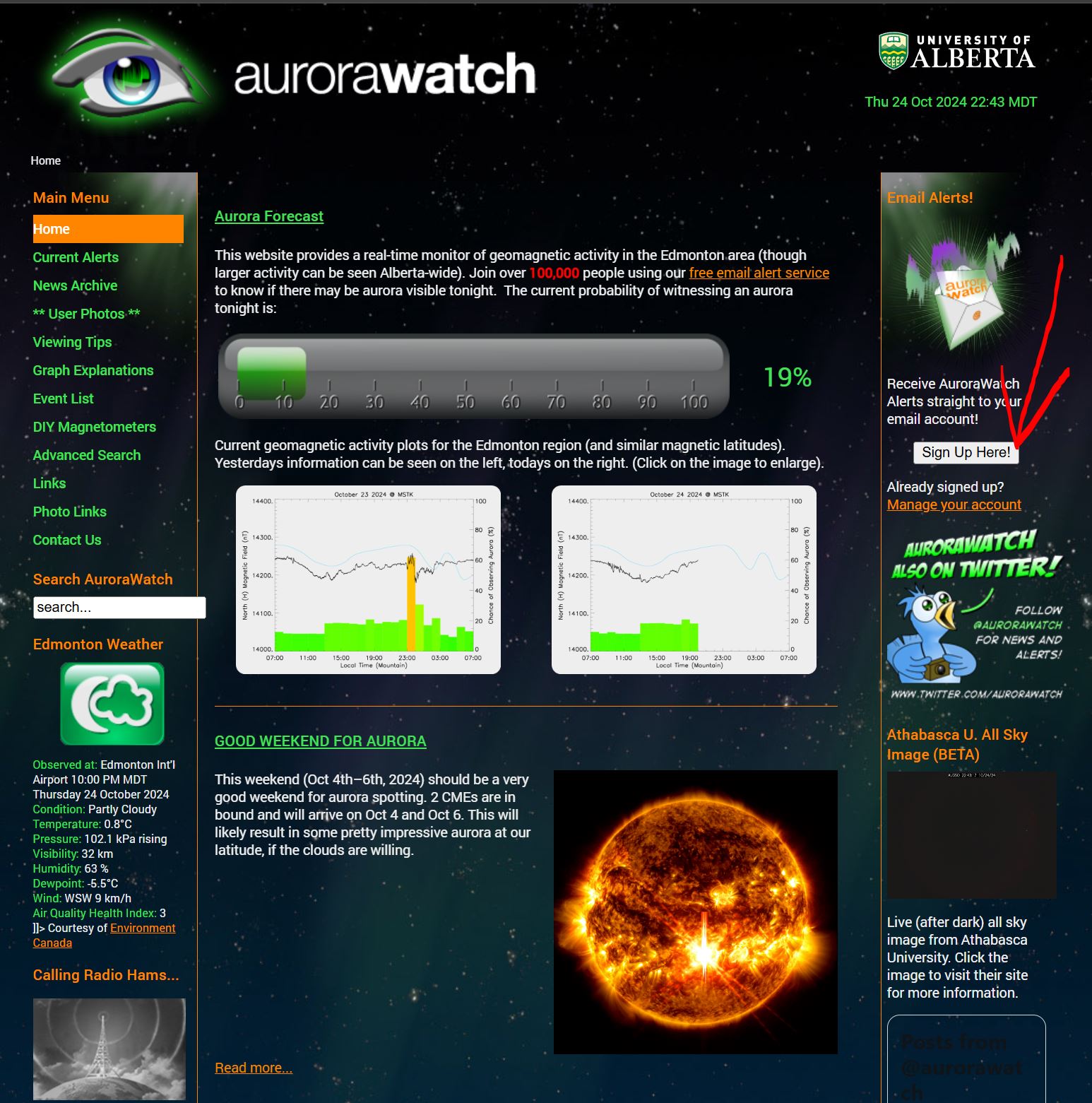
Hopefully, this these online notification services coupled with advancements in forecasting the Aurora Borealis will give you many opportunities to take in these wonderful events, so you’re not left in the dark. Happy chasing!
